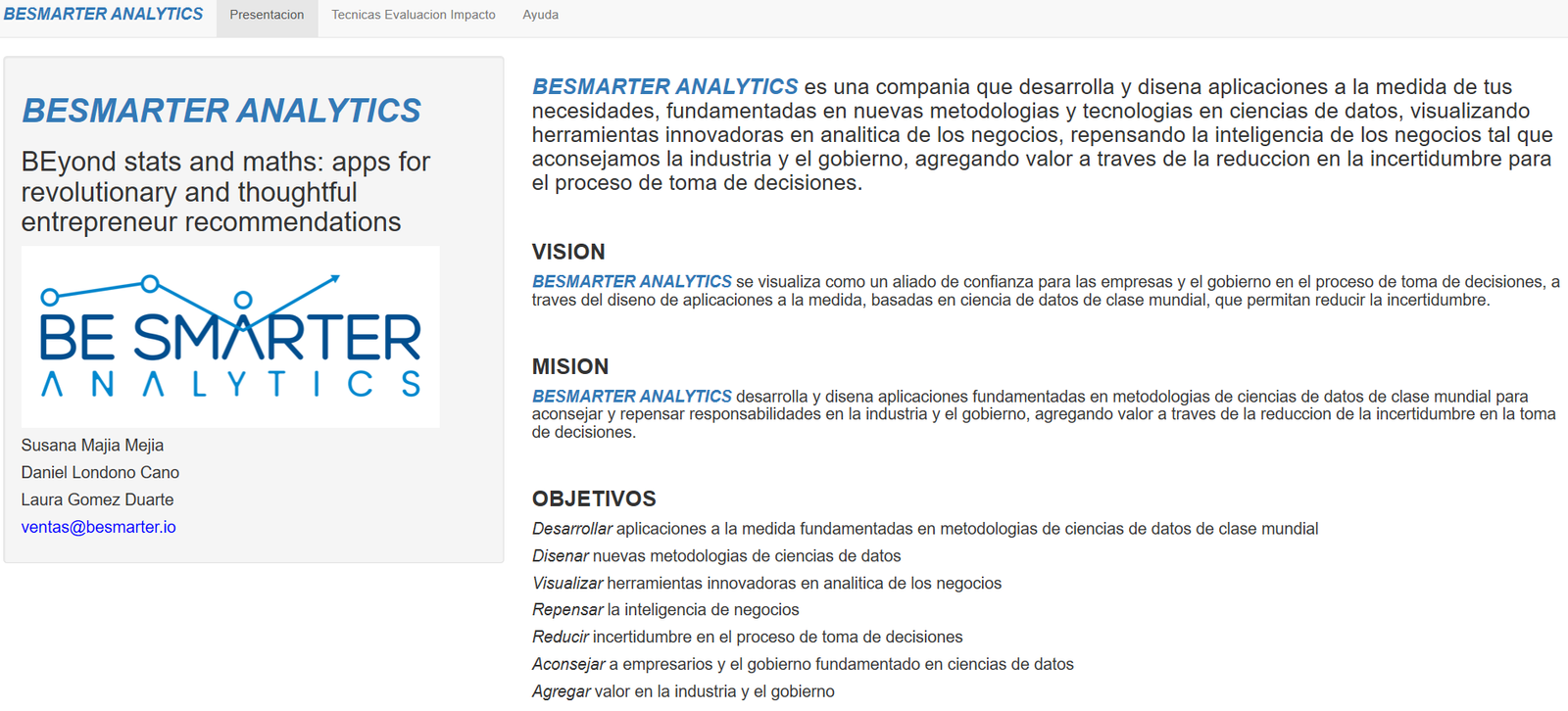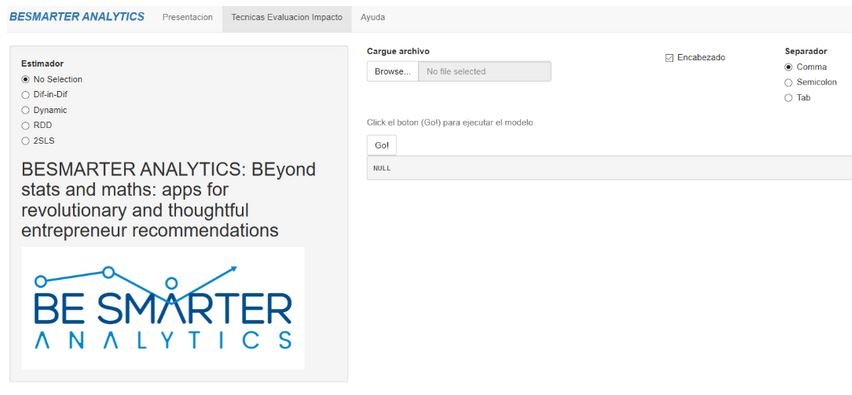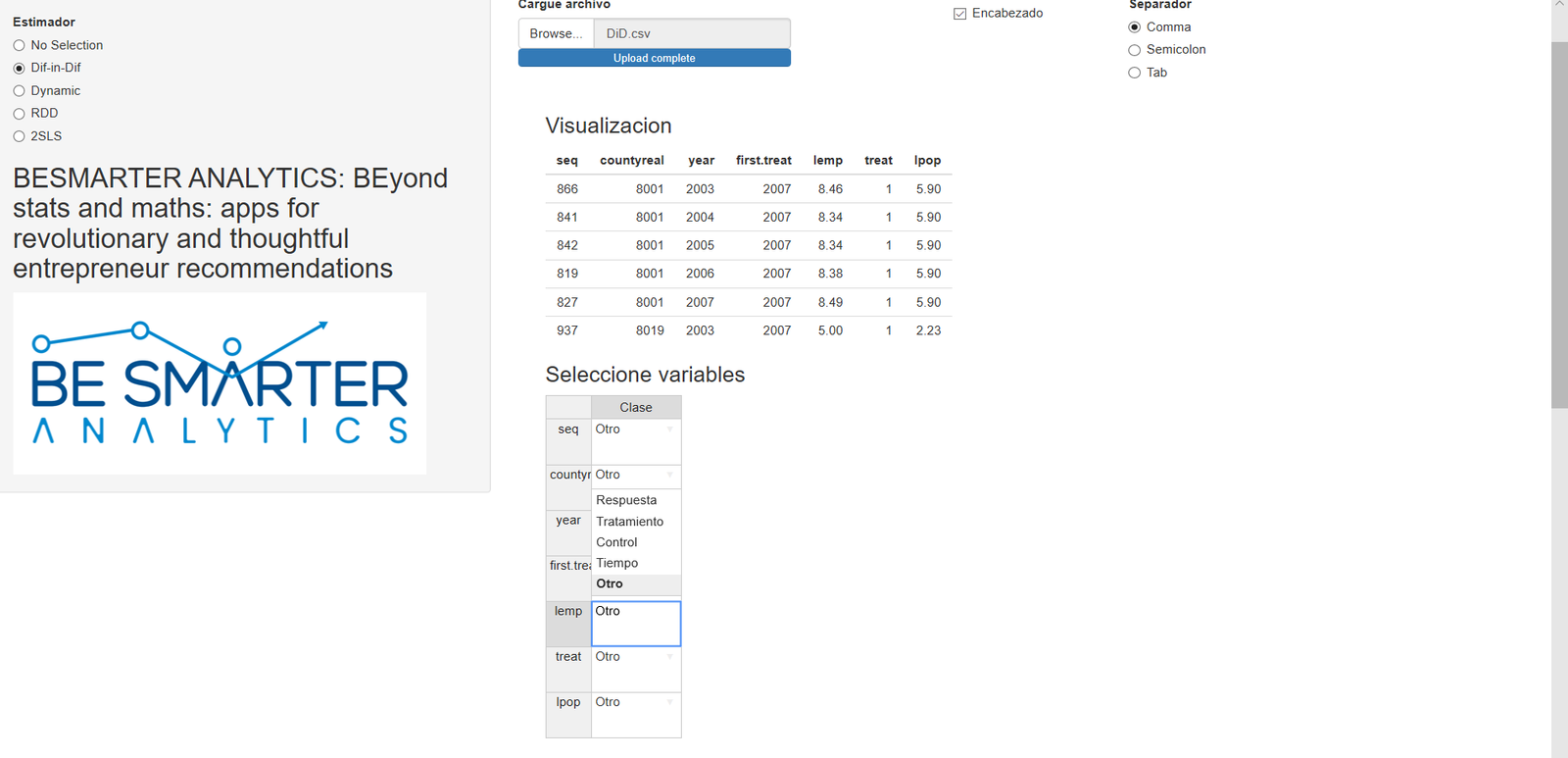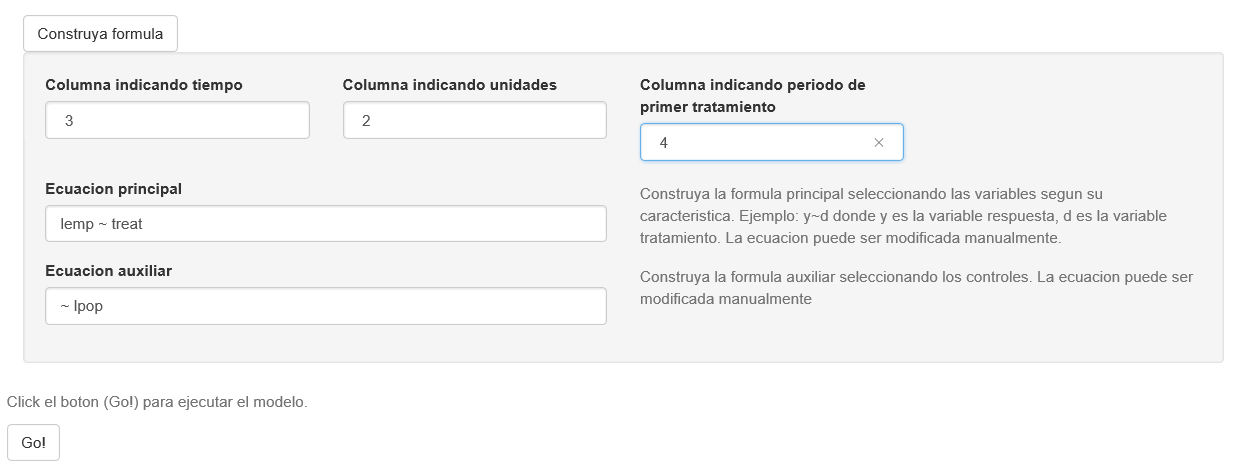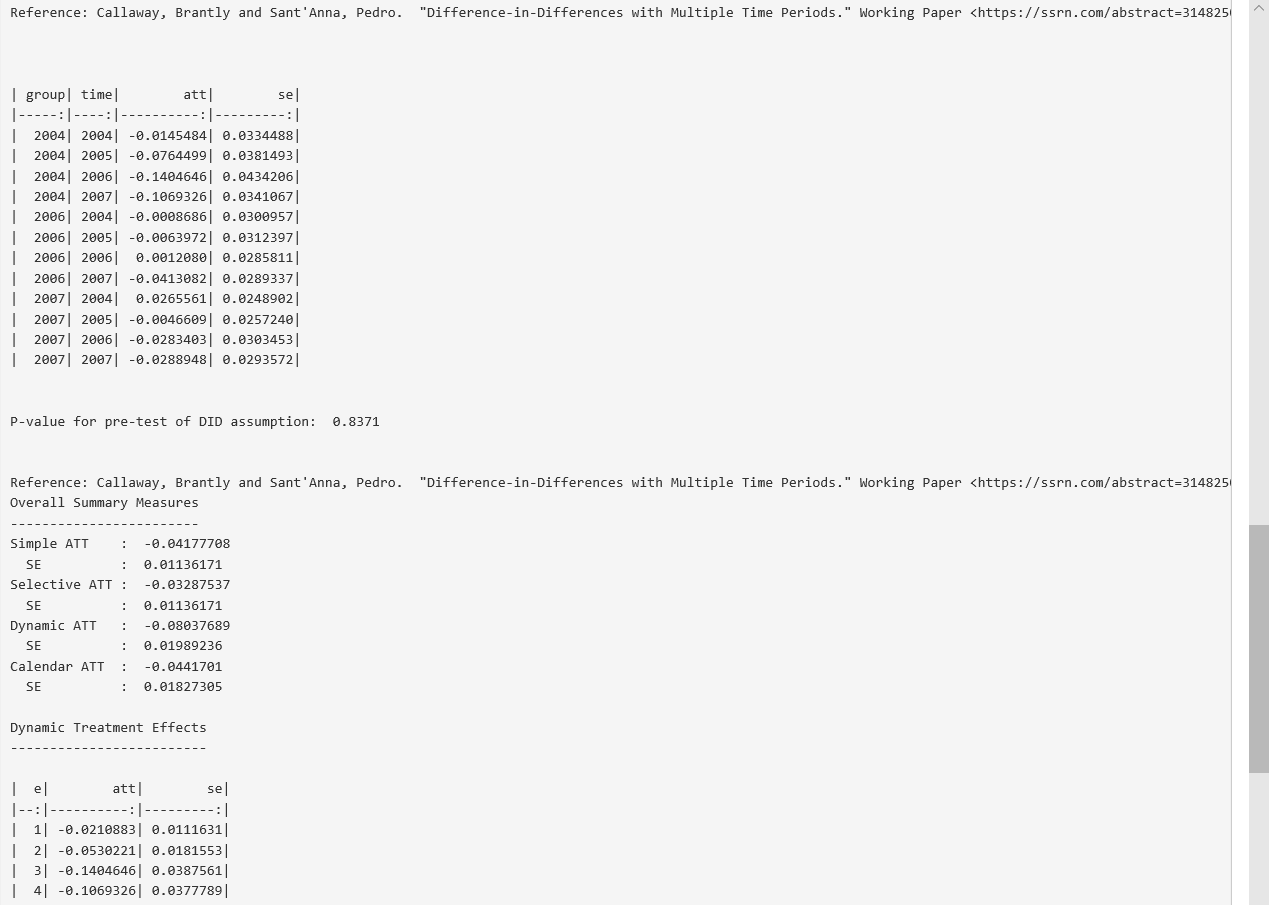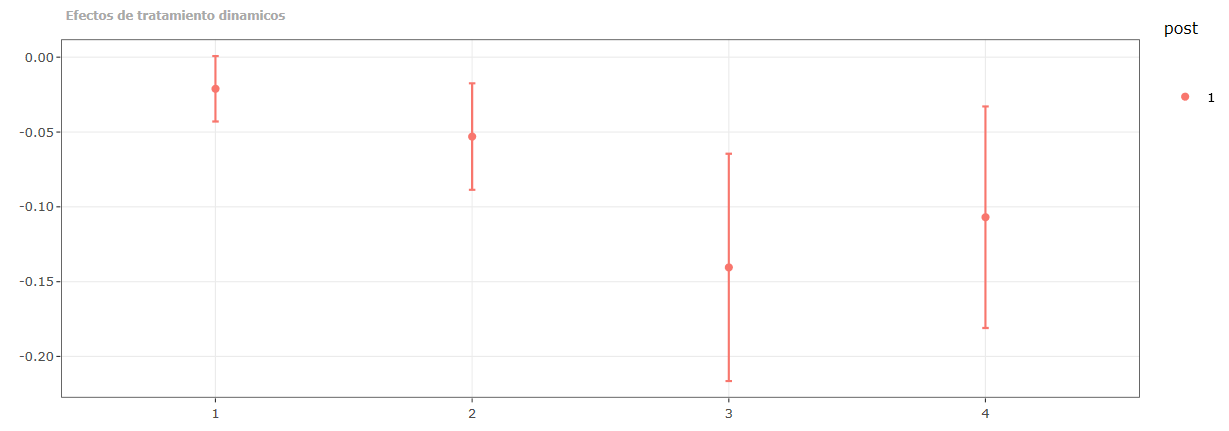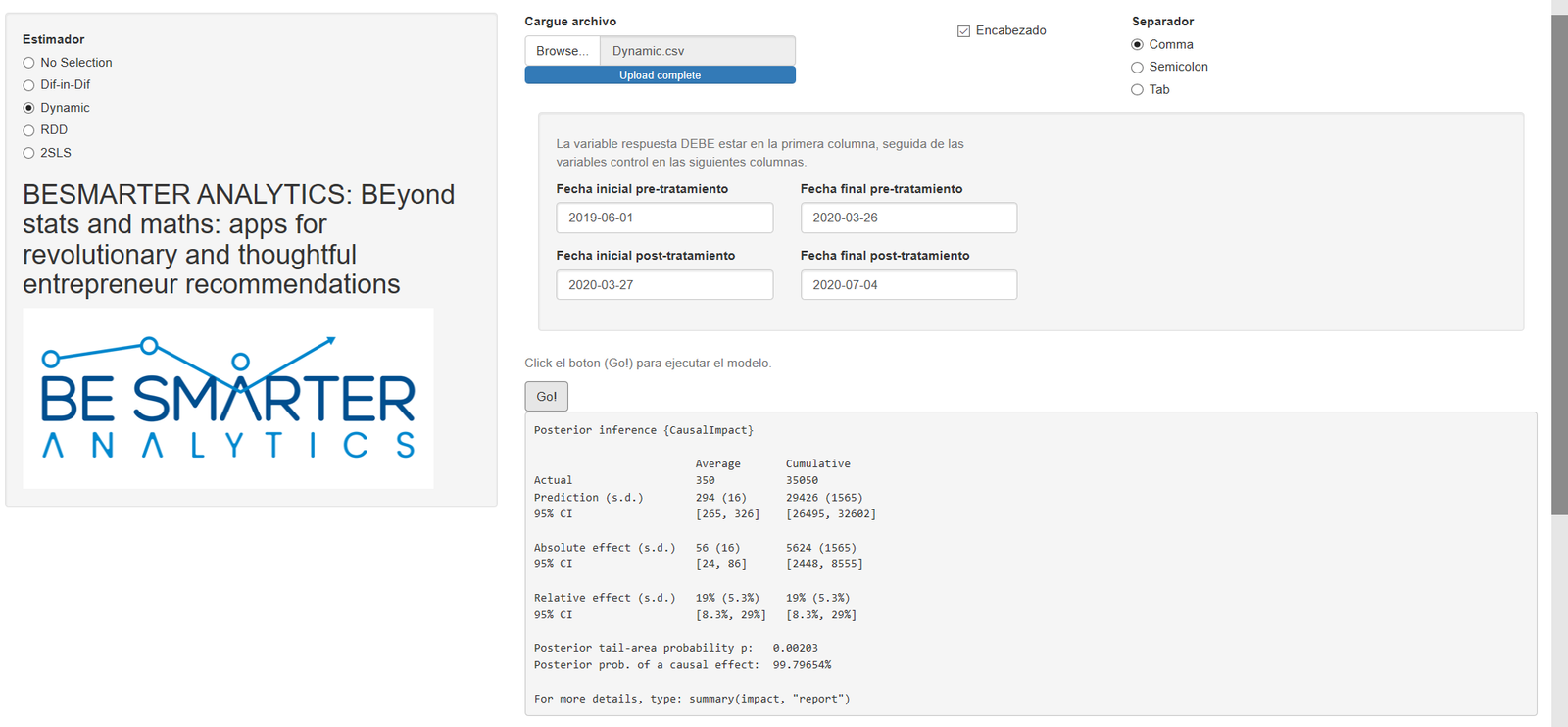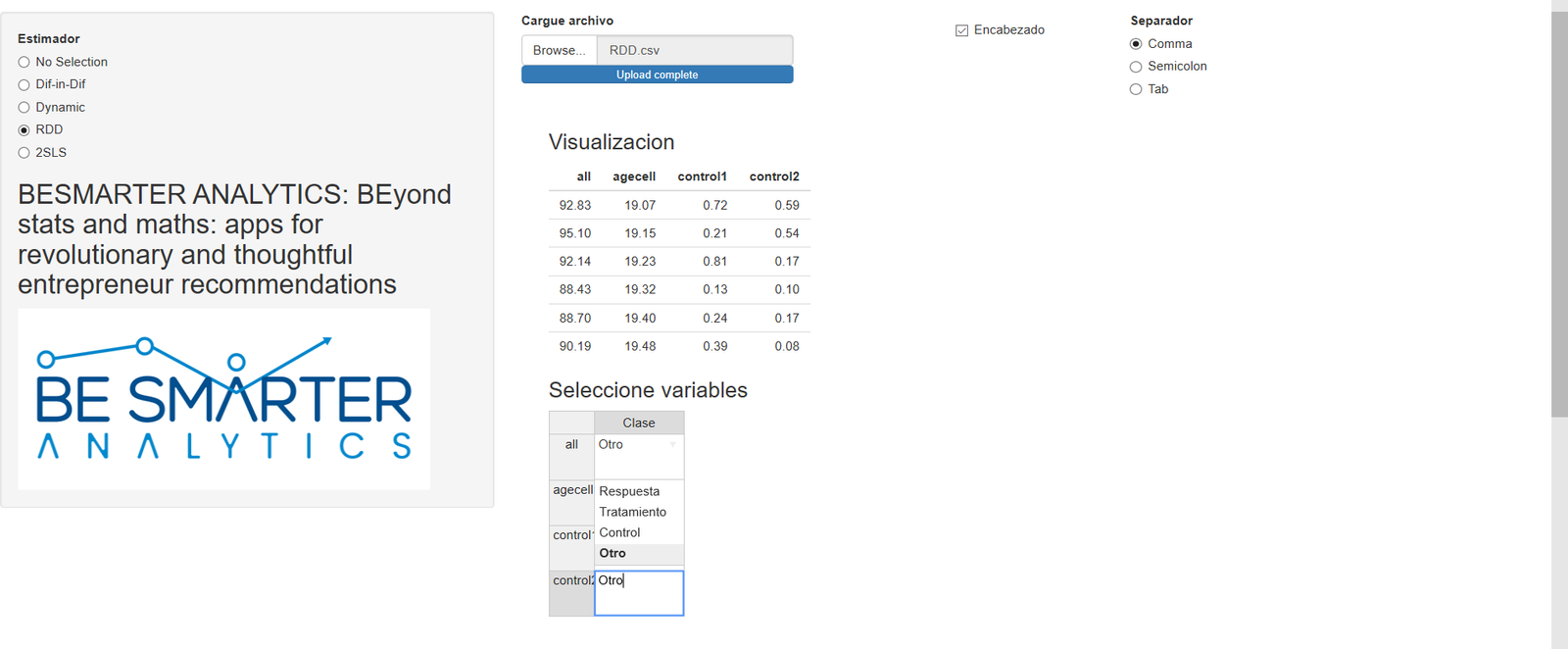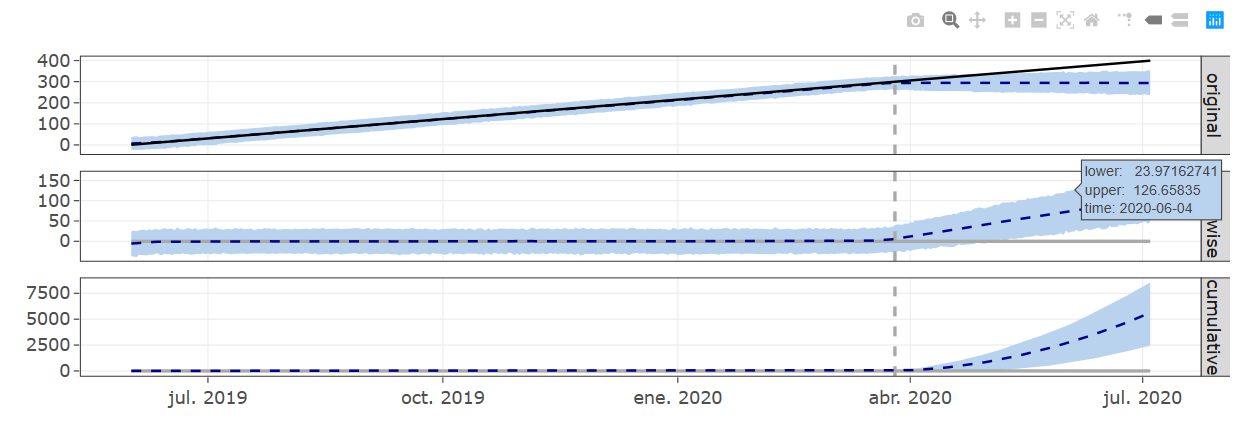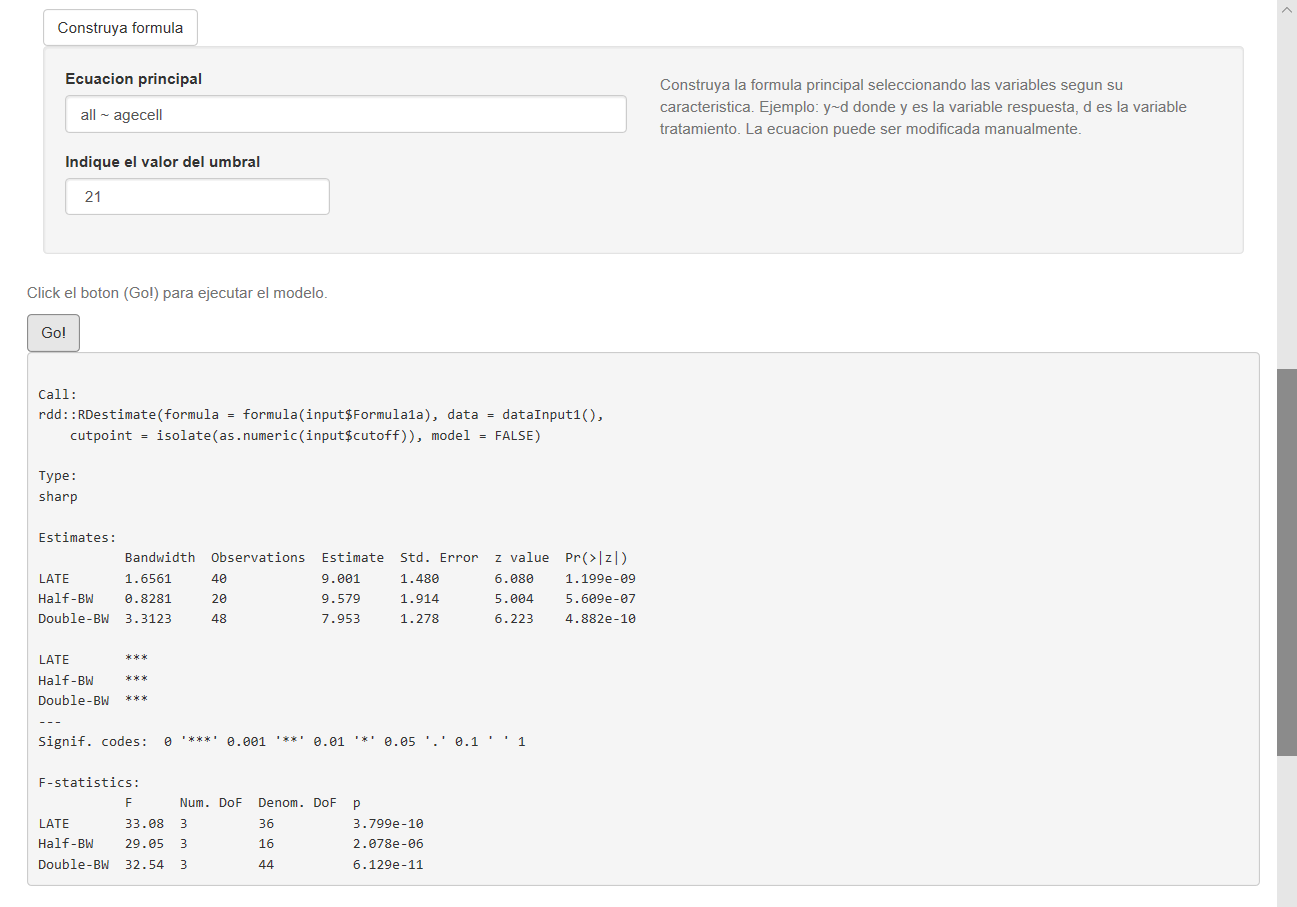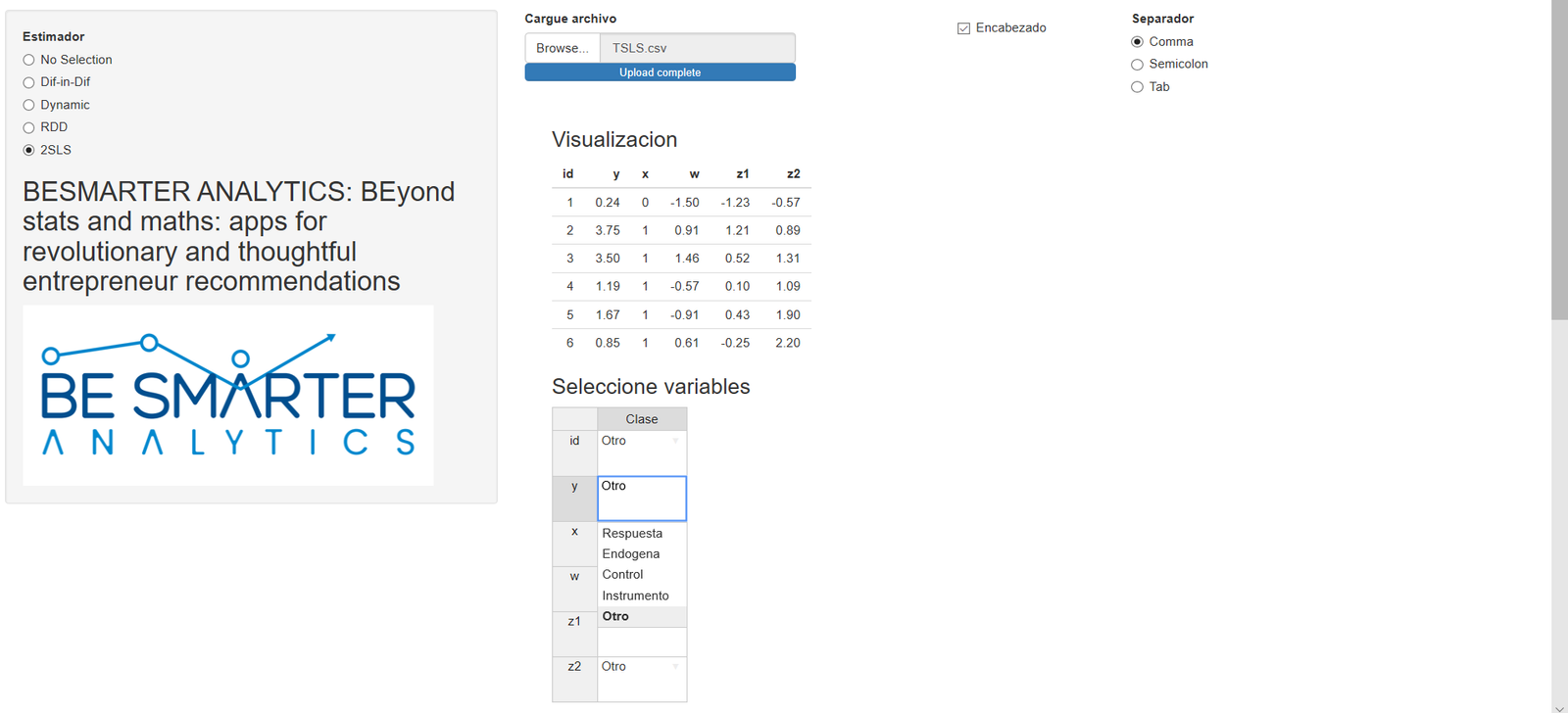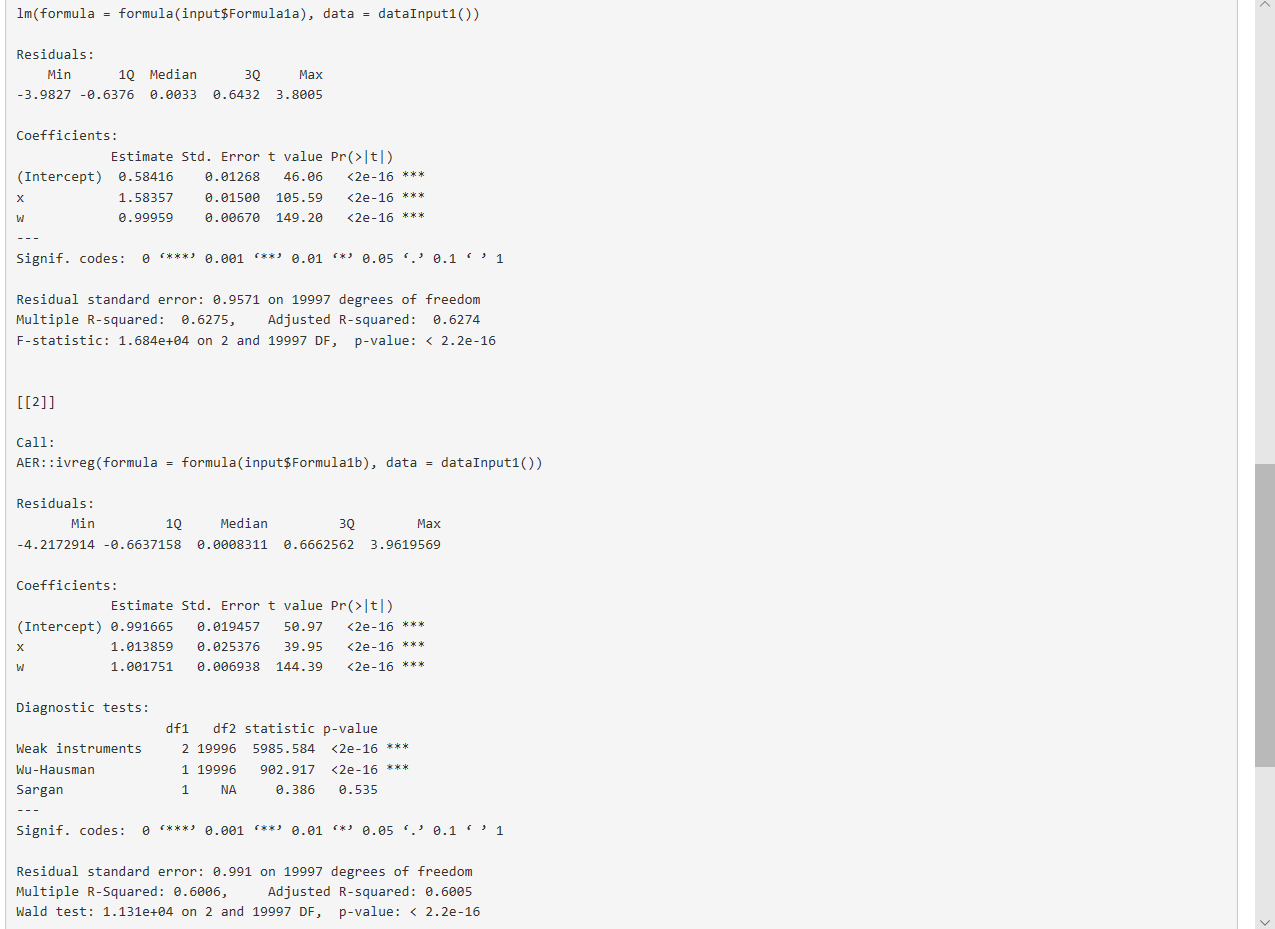Our impact evaluation methods are:
- Dif-in-Dif: Average treatment effects in a panel dataset where it is possible to have treatment in different periods.
- Dynamic: Dynamic forecasts to build counterfactuals using Bayesian structural models.
- RDD: Regression Discontinuity Design.
- 2SLS: Two Stage Least Squares.
This menu help to build the equations that are needed to perform the estimation step. This is done clicking on “Construya formula”. In addition, the user should type which column in the dataset is associated with the time, the cross sectional unit, and the first treatment period.
Then, click on “GO!”, and the outcomes are displayed. There, you can find the average treatment effects by group and period, their standard error, aggregated treatment effects: simple, selective, dynamic and calendar.
Then, click on “Construir formula”. There are two equations: the first is to perform ordinary least squares, and the second is to perform two stage least squares.
Click on “GO!” to have the estimates, standard errors, t tests and p values. In addition, there are some diagnostics associated with the two stage least squares estimator.

